News
Now Available: Spatio-temporal Image Analysis for Longitudinal and Time-Series Image Data
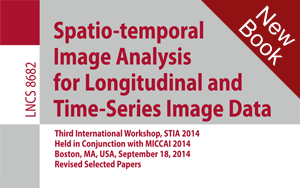 S. Durrleman, P.T. Fletcher, G. Gerig, M. Niethammer, X. Pennec (Eds.)
S. Durrleman, P.T. Fletcher, G. Gerig, M. Niethammer, X. Pennec (Eds.)Third International Workshop, STIA 2014, Held in Conjunction with MICCAI 2014, Boston, MA, USA, September 18, 2014, Revised Selected Papers
Series: Image Processing, Computer Vision, Pattern Recognition, and Graphics, Vol. 8682, Springer LNCS
Simulations Aimed at Safer Transport of Explosives
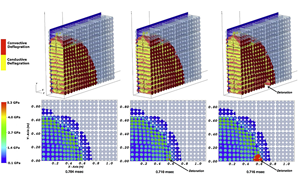 Credit: Jim Collins - Argonne Leadership Computing Facility
Credit: Jim Collins - Argonne Leadership Computing FacilitySee original article: "Simulations Aimed at Safer Transport of Explosives"
In 2005, a semi-truck hauling 35,000 pounds of explosives through the Spanish Fork Canyon in Utah crashed and caught fire, causing a dramatic explosion that left a 30-by-70-foot crater in the highway.
Fortunately, there were no fatalities. With about three minutes between the crash and the explosion, the driver and other motorists had time to flee. Some injuries did occur, however, as the explosion sent debris flying in all directions and produced a shock wave that blew out nearby car windows.
Now Available: Topological and Statistical Methods for Complex Data
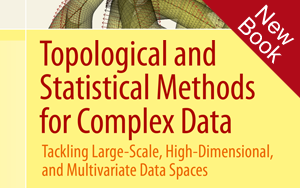 Edited by J. Bennett, F. Vivodtzev, V. Pascucci
Edited by J. Bennett, F. Vivodtzev, V. Pascucci- Latest peer-reviewed results in a growing research area
- Many applications in science and engineering
- Important contributions to the fields of mathematics and computer science
This book contains papers presented at the Workshop on the Analysis of Large-scale, High-Dimensional, and Multi-Variate Data Using Topology and Statistics, held in Le Barp, France, June 2013. It features the work of some of the most prominent and recognized leaders in the field who examine challenges as well as detail solutions to the analysis of extreme scale data.
Strong Showing for SCI Alumni at Vis 2014
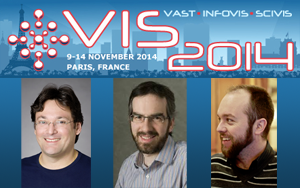 Congratulations to our former SCI Institute and SoC Colleague Claudio Silva, now at New York University Polytechnic School of Engineering, who was awarded the 2014 IEEE Visualization Technical Achievement Award at Vis 2014 in Paris. The award is in recognition of seminal advances in geometric computing for visualization and for contributions to the development of the VisTrails data exploration system.
Congratulations to our former SCI Institute and SoC Colleague Claudio Silva, now at New York University Polytechnic School of Engineering, who was awarded the 2014 IEEE Visualization Technical Achievement Award at Vis 2014 in Paris. The award is in recognition of seminal advances in geometric computing for visualization and for contributions to the development of the VisTrails data exploration system.See: Phys.Org "NYU professor wins premier award in the data visualization field."
School of Computing Recognized Among 50 Most Innovative CS Departments in the U.S.
 The University of Utah's School of Computing was recently recognized in Computer Science Degree HUB's list of The 50 Most Innovative Computer Science Departments in the U.S. The SCI Institute was also mentioned as a place where "students work side by side with distinguished scientists to come up with pioneering biomedical solutions."
The University of Utah's School of Computing was recently recognized in Computer Science Degree HUB's list of The 50 Most Innovative Computer Science Departments in the U.S. The SCI Institute was also mentioned as a place where "students work side by side with distinguished scientists to come up with pioneering biomedical solutions."
Treating Tremors
Dr. Christopher Butson Interviewed for AMS
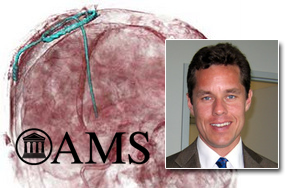 It may not sound like much fun having an electrode implanted in your brain, yet it's much better than not being able to hold anything even for a second, which can happen to someone with Parkinson's disease or essential tremor. Deep brain stimulation is effective in treating these conditions, but determining the proper stimulating parameters can take many hours and can require multiple visits by patients. Mathematics is part of a new approach that reduces the time needed to find optimal settings of the electrodes from several hours to a few minutes. First, mathematical models describe a person's brain accurately. Then systems of differential equations that represent neuron behavior are solved numerically. This combination allows doctors to see the results of different strategies in real time and speed their patients' return to normal lives.
It may not sound like much fun having an electrode implanted in your brain, yet it's much better than not being able to hold anything even for a second, which can happen to someone with Parkinson's disease or essential tremor. Deep brain stimulation is effective in treating these conditions, but determining the proper stimulating parameters can take many hours and can require multiple visits by patients. Mathematics is part of a new approach that reduces the time needed to find optimal settings of the electrodes from several hours to a few minutes. First, mathematical models describe a person's brain accurately. Then systems of differential equations that represent neuron behavior are solved numerically. This combination allows doctors to see the results of different strategies in real time and speed their patients' return to normal lives.
Now Available: Scientific Visualization
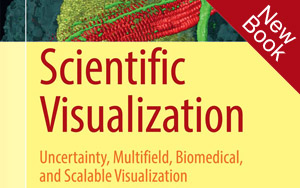 Edited by Hansen, C.D., Chen, M., Johnson, C.R., Kaufman, A.E., Hagen, H.
Edited by Hansen, C.D., Chen, M., Johnson, C.R., Kaufman, A.E., Hagen, H.Based on a seminar that took place in Dagstuhl, Germany, this contributed volume studies four important topics within scientific visualization: uncertainty visualization, multifield visualization, biomedical visualization and scalable visualization.
- Uncertainty visualization deals with uncertain data from simulations or sampled data, uncertainty due to the mathematical processes operating on the data, and uncertainty in the visual representation,
- Multifield visualization addresses the need to depict multiple data at individual locations and the combination of multiple datasets,
- Biomedical is a vast field with select subtopics addressed from scanning methodologies to structural applications to biological applications,
- Scalability in scientific visualization is critical as data grows and computational devices range from hand-held mobile devices to exascale computational platforms.
Best Paper Award at MICCAI 2014
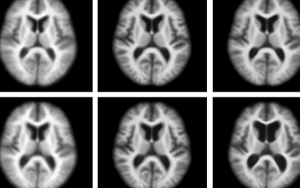 Congratulations to PhD student Miaomiao Zhang, who won the MICCAI 2014 Young Scientist Award (a.k.a., best paper award) for her paper:
Congratulations to PhD student Miaomiao Zhang, who won the MICCAI 2014 Young Scientist Award (a.k.a., best paper award) for her paper:M. Zhang, P. T. Fletcher, Bayesian Principal Geodesic Analysis in Diffeomorphic Image Registration, MICCAI 2014.
MICCAI is the premiere venue in medical image analysis with ~1000 attendees.
UDCC Open House
 Wednesday, September 17th 2014
Wednesday, September 17th 201410 am to 3 pm
University of Utah
Warnock Engineering Building, Catmull Gallary
72 So. Central Campus Dr.
The first UDCC open house will bring together our consortium partners and engineering students to a single venue. Partners interested in sponsoring student internships through the new Data Center Engineering Certificate will be present for questions, and students will have the opportunity to hear from and engage with some of our nation's leading experts in the field. You can visit our website or email us for more information.
UV-CDAT Receives Outstanding Partnership Award from the FLC
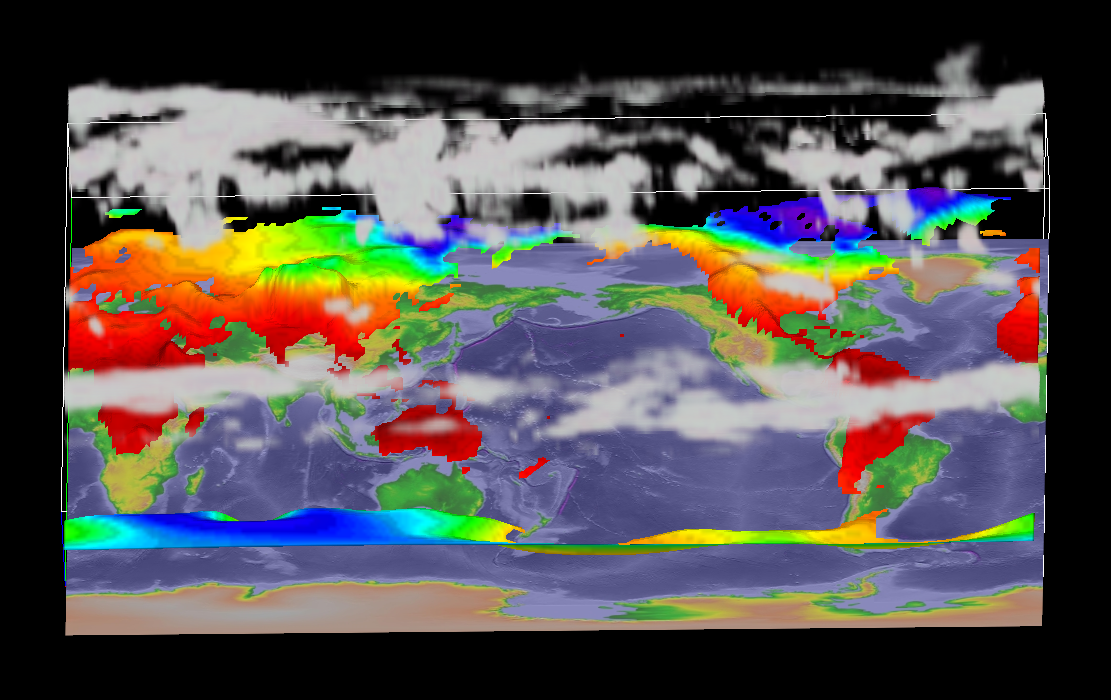 The Federal Laboratory Consortium for Technology Transfer (FLC) Far-West Region presents Outstanding Partnership award to Ultrascale Visualization Climate Data Analysis Tools. This is a joint partnership with Lawrence Livermore National Laboratory, New York University, Kitware, inc., Goddard Space Flight Center, Earth System Research Laboratory, Tech-x Corporation, Oak Ridge National Laboratory, Lawrence Berkeley National Laboratory, Los Alamos National Laboratory, and the University of Utah.
The Federal Laboratory Consortium for Technology Transfer (FLC) Far-West Region presents Outstanding Partnership award to Ultrascale Visualization Climate Data Analysis Tools. This is a joint partnership with Lawrence Livermore National Laboratory, New York University, Kitware, inc., Goddard Space Flight Center, Earth System Research Laboratory, Tech-x Corporation, Oak Ridge National Laboratory, Lawrence Berkeley National Laboratory, Los Alamos National Laboratory, and the University of Utah.
Paper Featured on Cover of Journal of Cardiovascular Electrophysiology
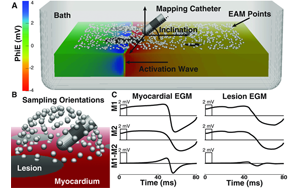 Congratulations to Josh Blauer, Darrell Swenson, and Rob MacLeod, et. al. whose paper:
Congratulations to Josh Blauer, Darrell Swenson, and Rob MacLeod, et. al. whose paper:J.J.E. Blauer, D. Swenson, K. Higuchi, G. Plank, R. Ranjan, N. Marrouche, and R.S. MacLeod. “Sensitivity and Specificity of Substrate Mapping: An In Silico Framework for the Evaluation of Electroanatomical Substrate Mapping Strategies,” In Journal of Cardiovascular Electrophysiology, In Journal of Cardiovascular Electrophysiology, Vol. 25, No. 7, pp. 774--780. May, 2014.
is featured on the cover of the July 2014 issue of the Journal of Cardiovascular Electrophysiology.




